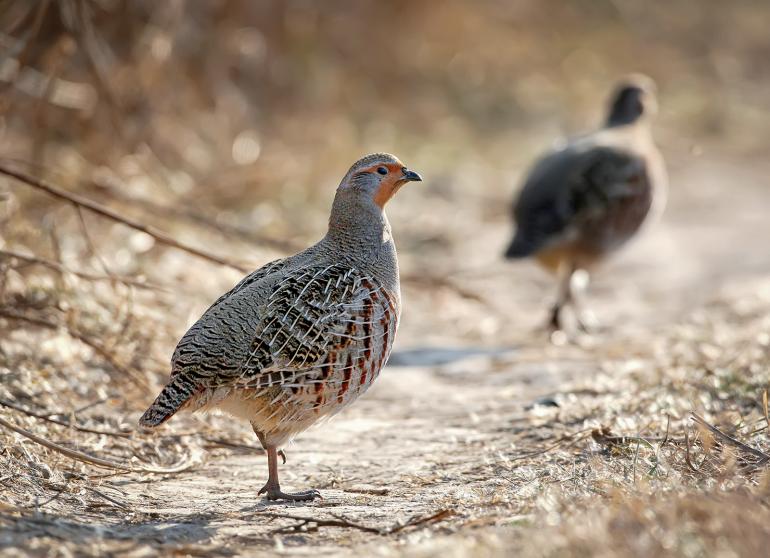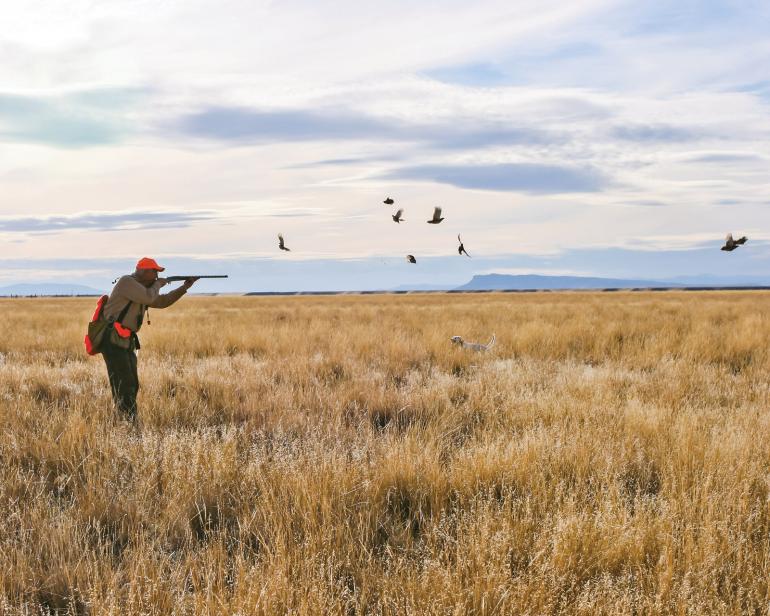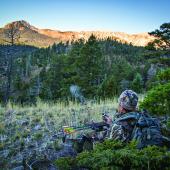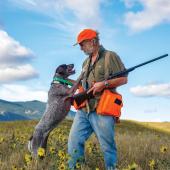Grey Bird Go
Hunting Hungarian partridge close to home.
Here in Montana, September first serves as our homegrown equivalent of England’s Glorious Twelfth, the traditional opening day of their upland shooting season. (Civilized folk that they are, British gentry “shoot” rather than dirtying their tweeds by “hunting” as we do.) The famous red grouse, just like the scotch label, is the only gamebird quarry shot on the Brits’ sacred opener. In comparison, Montana’s September 1 opening day ushers in an embarrassment of riches: sharptails, sage hens, three varieties of “mountain” grouse, and our subject here: Hungarian partridge.
Some clarification, prior to proceeding. Hungary is just a tiny fraction of the birds’ native Old-World range. While almost every upland hunter in Montana refers to them as Huns, their correct common name is gray partridge, a technicality I’ll ignore here. Whatever one chooses to call them, they are great gamebirds—my personal favorite among all the many Montana has to offer.
Shortgrass prairie adjacent to stubble fields is classic Hun cover, especially if the grass hasn’t been heavily grazed
Habitat
As is so often the case, successful hunting begins with recognizing the quarry’s preferred habitat. Shortgrass prairie adjacent to stubble fields is classic Hun cover, especially if the grass hasn’t been heavily grazed. Huns also love to frequent abandoned buildings and adjacent shelter belts. While these habitats are typical, I have also found Huns at sub-alpine elevations in isolated central Montana mountain ranges.
Behavior
Understanding a species’ behavioral quirks is more important in the pursuit of Huns than any other gamebird in the state. Our only true covey birds, they aggregate in groups of 8-15 and flush simultaneously when disturbed. Initial covey rises often occur beyond shotgun range. Typically, the covey stays together and flushes wild at the next three or four encounters. Covey rises are fast and confusing, and the mental ability to isolate one target from many is essential if you want to hit anything but air.
Eventually, coveys often break up into singles that hold well and offer close shots. Following the covey until it disperses is an obvious tactic, but Huns have an uncanny ability to fly around terrain features and disappear. You may be able to mark the spot where a flushed covey has settled to ground, but often you can’t until the third or fourth try. If you can’t mark them down, expect some hiking before you reestablish contact.
These behaviors make a compelling argument for a capable bird dog. In the big, open country Huns prefer, you may have to cover a lot of ground before you locate a covey in the first place or when you’ve lost track of one after a rise. A good bird dog can get that done a lot more efficiently than we can. Once they break up and hold, a steady pointing dog can locate hidden singles you might never notice. A flushing dog can be useful on Huns, and I’ve hunted them with my Labs for decades. However, the argument for pointers is aesthetic as well as practical. The sight of one of my wirehairs frozen on point with a single Hun hidden somewhere beneath its nose makes my day even if I miss the bird.
Gear
Huns are not hard to bring down. I like a 20-gauge double-choked improved-cylinder/modified and shoot 7.5-shot early in the season. Since shots are often longer as the season progresses and tougher ringnecks and Huns are often found together, I move up to 6-shot once pheasant season opens in October.
Regs
First, my standard disclaimer. Regulations change and hunters should always review current versions before heading afield. Standard Montana Hun regulations are generous, with an eight-bird daily limit and a four-month season running from early September to late December.
Retired doctor, former bush pilot, and prolific author E. Donnall Thomas Jr. has been writing about hunting, fishing, and access thereto since a time long before Montana landowners cared who crossed their land.












